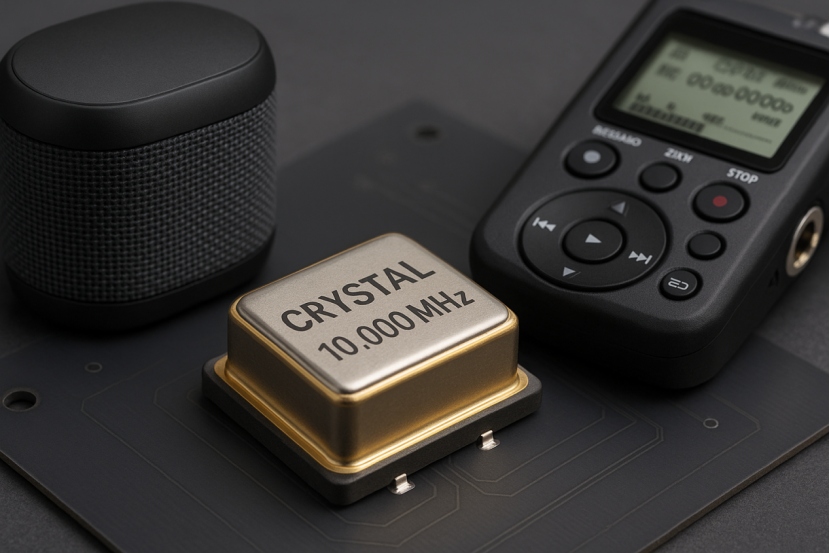
In high-fidelity audio equipment, maintaining precision and stability in signal processing is essential for achieving superior sound quality. A critical component enabling this performance is the audio oscillator, particularly the crystal oscillator, which generates highly stable clock signals for digital audio systems. These signals synchronize operations within processors, converters, and transmission modules—directly affecting the clarity, accuracy, and realism of the audio output.

Digital audio relies on precise timing for accurate sampling, data transfer, and signal conversion. The audio oscillator provides a reference frequency that governs these operations. Any instability in this clock signal—commonly known as jitter—can degrade audio quality by introducing phase noise or timing mismatches between audio samples.
A low-jitter crystal oscillator minimizes timing deviations, enabling audio processors to function with higher fidelity. This stability is vital in applications such as wireless speakers, where audio data is transmitted, decoded, and rendered in real time. Without a stable oscillator, fluctuations in the clock signal can lead to audible artifacts, degraded dynamic range, and reduced stereo accuracy.
One of the most critical attributes of an oscillator in audio applications is low phase noise. Phase noise refers to small, rapid fluctuations in the phase of a signal and directly correlates with how “clean” or “transparent” the resulting audio is. In high-end systems, particularly digital-to-analog converters (DACs), even small amounts of phase noise can blur fine details and reduce the sense of spatial separation in recordings.
To mitigate this, high-fidelity systems incorporate ultra-low phase noise oscillators to provide reference clocks for DAC and ADC modules. These oscillators support frequency stability on the order of parts per billion, which ensures consistent sampling and playback, even at high bit rates or under thermal stress.
In digital recording interfaces, the precision of the sampling clock directly affects how faithfully analog signals are captured and digitized. Using a high-precision audio oscillator during analog-to-digital conversion ensures that the timing between samples remains constant, reducing harmonic distortion and preserving transient detail.
For example, temperature-compensated crystal oscillators (TCXOs) are often used in professional-grade recording equipment to maintain frequency stability across a range of temperatures. This allows portable or field-based systems to deliver studio-level accuracy, regardless of environmental conditions.
Wireless audio systems introduce additional complexity due to latency, signal loss, and synchronization issues. Here, the oscillator plays a dual role: enabling accurate decoding of incoming digital signals and ensuring that playback modules remain in sync. In Bluetooth audio modules, for instance, precise clock generation helps reduce buffering delays and prevents dropouts.
Furthermore, the oscillator supports key protocols like aptX and LDAC by ensuring that encoded signals are decoded with timing accuracy. Without reliable oscillator performance, even the most advanced codecs cannot achieve their full potential in terms of soundstage and resolution.
The use of high-performance oscillators is complemented by other supporting components. A clock buffer, for instance, distributes the oscillator's signal to multiple parts of a circuit without degrading signal integrity. Similarly, low-noise voltage regulators are essential for powering oscillators in sensitive audio applications, ensuring that electrical noise does not compromise the clock’s precision.
In digital and wireless audio systems, the purpose of the audio oscillator extends far beyond basic timing. It serves as the foundation for accurate signal processing, minimal distortion, and transparent playback. Crystal oscillators—especially those engineered for low phase noise and frequency stability—are essential to modern high-fidelity audio equipment. Whether in studio recording gear or consumer-grade wireless speakers, these components help deliver the level of precision that discerning listeners and audio professionals demand.